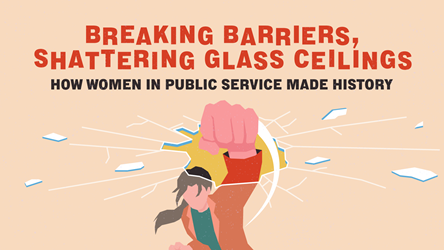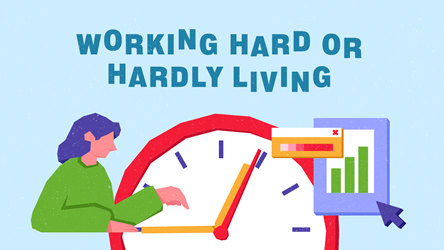The Hustle And Rebuttal Of Youth

Trying to figure out the work ethic of today’s youths? It can be a real enigma. It is as easy to picture youths as energetic hustlers perpetually bouncing off the walls with new ideas as it is to see a few of them as lazy layabouts looking to coast by on the bare minimum.
In truth, our youths tend to be neither of those extremes. In a 2019 survey conducted by the National Youth Council, youths (aged 15-34) ranked career success as the fourth most important goal out of 19 possible life goals. While work is important to youths, it is not one of their top-most priorities.
The Top Life Goals for Youths:
- Family
- Homeownership
- Self-improvement
- Career success
The younger generation tends to value work-life balance more and are willing to think outside the box to strike that equilibrium. This has given rise to a preference for more flexible work arrangements, and even for virtual interviews over face-to-face interactions.
Here are four mindsets popular among youths that may explain how they approach work:
Hustle Culture
“Hustle culture” is believed to have started in the US as a way for younger, less experienced workers to ride out the setbacks of the 2008 recession.
By devoting more of their time to side hustles, such as gig work, or going above and beyond at work to impress bosses, these youths sought financial security through increased savings or promotions to higher-paying positions.
The spirit of this movement is alive and hustlin’ in Singapore as well. A recent study found our nation to be the most hardworking – or overworked? – in the Asia Pacific, averaging 45 hours of work per week and seven days of leave per year.
Did you know: Food delivery is one of the most popular side hustles in Singapore. Almost two in three food delivery riders here are part-timers.
In July 2022, a mother of two shared videos of herself going about her job as a part-time food delivery walker, with both the food and her young children in tow on board a hand-powered wagon. She described it as a fun experience she shared with her kids.

FIRE Movement
The “Financial Independence, Retire Early” or FIRE movement is fascinating in its duality.
Those who believe in this movement are motivated to work hard while they are young, save intensely and retire early. Their goal is to pinch every penny in their 20s to 40s so that these savings can be put towards investments that will eventually generate enough passive income for an early retirement.
In Singapore, the FIRE movement has seen a resurgence in recent years. Experts suggest that this was in part because the COVID-19 pandemic prompted people to rethink the lifestyles they aspire towards.
This movement has a special appeal to youths because the nature of early investments and compounding interest means that, for once, less experienced youths find themselves at an advantage due to their age. Starting this fiery lifestyle young will make them more likely to achieve their goal of retiring early.

Quiet Quitting
In contrast, quiet quitting is a lifestyle where work duties are performed as laid out in one’s job description, and nothing more. A 2022 Gallup survey estimated that around 50% of the US workforce is made up of quiet quitters.
Youths who adopt quiet quitting reject the self-imposed long hours to go the extra mile, which is prevalent in hustle culture. “Quitting” in the movement’s name should not be taken at face value, since these youths are very much still doing their jobs. However, they feel that sticking strictly to baseline duties at work allows them more free time to engage in hobbies and maintain their mental health.
Those who live by the “hustle culture” or “quiet quitting” are not necessarily two distinct groups. Many of us will likely have a tug-of-war in our heads between wanting to invest time to advance our careers and only doing the bare minimum at work so we can focus on our personal lives.
These are some factors that may cause a young adult to switch from one lifestyle to the other:
Muting the HustleEmployees who suffer burnout or a lack of recognition from bosses despite enormous amounts of effort may choose to “quietly quit” to give themselves a much-needed break. |
From Quiet to BustleLaid-back employees who hit a life milestone, such as getting married, may be motivated to earn more to supplement their lifestyle change and get a second wind at work. |

Laying Flat and Letting It Rot
“Laying flat” or “letting it rot” is a lifestyle similar to quiet quitting. These young adults seek to minimise personal stress by adopting a passive and detached approach to work.
This was the region’s rebuttal to China’s 996 working culture, where 12-hour work days – 9am to 9pm – six days a week are expected.
Did you know: “Laying flat” (or 躺平) was one of the top 10 Internet buzzwords in China for 2021, whereas “996” was one of the top 10 buzzwords for 2019. Could this be indicative of a shift in mentality for youths in the region?
What Works for You?
As these mindsets crest and fall within our community, with shifts often championed by vocal young adults, some employers in Singapore have already started to adapt.
This year, a Japanese restaurant in Orchard pivoted to a four-day work week as the new standard for employees, to keep up with the expectations of prospective workers.
This opens up more options for employees seeking a job that suits their needs. Regardless of whether the hustle or the quiet is a better fit, one thing remains constant – we would do well to discern our priorities at each stage of life and adopt helpful mindsets for a meaningful career that makes an impact.
- POSTED ON
Oct 25, 2022
- TEXT BY
Chia Soong Ming
- ILLUSTRATION BY
Mushroomhead









